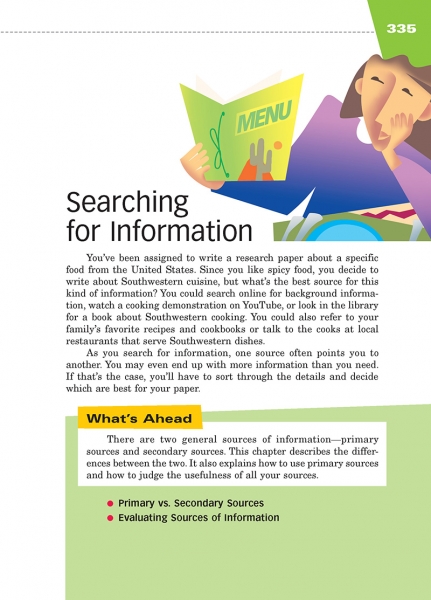Page 335 from

Start-Up Activity
Say to your students, "What if I asked you to write a paper about Mexican food? Where would you get your information?" As students suggest sources, write them on the board. Perhaps one student will joke, "Eat some tacos!" If not, you can make the suggestion.
Point out that eating some tacos is a terrific way to gather information about Mexican food. Then ask students where they would get the tacos. Trying Taco Bell tacos will be very different from eating tacos at an authentic Mexican restaurant, which will be very different from making and eating tacos at home—following multiple recipes. And after comparing the many different types of tacos, finding out how each recipe came into being would help the writer know much more about Mexican cuisine.
Help students understand that when they search for information, they should look far and wide. They don't have to include just books and Internet articles. They can also have delicious firsthand experiences.
Think About It
“Every moment is an experience.”
—Jake Roberts

Start-Up Activity
Say to your students, "What if I asked you to write a paper about Mexican food? Where would you get your information?" As students suggest sources, write them on the board. Perhaps one student will joke, "Eat some tacos!" If not, you can make the suggestion.
Point out that eating some tacos is a terrific way to gather information about Mexican food. Then ask students where they would get the tacos. Trying Taco Bell tacos will be very different from eating tacos at an authentic Mexican restaurant, which will be very different from making and eating tacos at home—following multiple recipes. And after comparing the many different types of tacos, finding out how each recipe came into being would help the writer know much more about Mexican cuisine.
Help students understand that when they search for information, they should look far and wide. They don't have to include just books and Internet articles. They can also have delicious firsthand experiences.
Think About It
“Every moment is an experience.”
—Jake Roberts